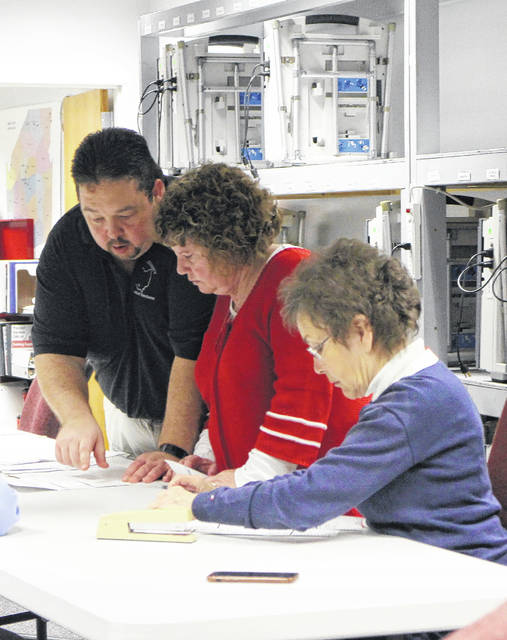
As it did across Ohio, state Issue 1 passed in Highland County, while state Issue 2 went down to a resounding defeat.
In Highland County, Issue 1, Marcy’s Law ended up unofficially with 5,804 yes votes to 1,369 no votes.
Issue 2, the Drug Price Relief Act, went down locally 6,221-1,005.
Other local issues and options:
* Sinking Spring renewal of a 4 mill, five year levy for current expenses, for 14, against, 8.
* Brushcreek Township renewal of a 2 mill, five year levy for fire protection, for 132, against 48.
* Union Township additional cemetery levy of 0.5 mills for five years, for 105, against 156.
* Local option in Hillsboro Southeast 23 precinct for Big Ernie’s to have Sunday sales of alcohol, yes 116, no 91.
Across Ohio, voters rejected the proposal Tuesday that sought to curb prescription drug prices paid by the state for prisoners, injured workers and poor people while supporting a crime victims’ rights amendment with no organized opposition.
The pharmaceutical industry spent more than $50 million to oppose Issue 2, the Ohio Drug Price Relief Act, saying it would reduce access to medicines and raise prices for veterans and others.
Supporters, led by the California-based AIDS Healthcare Foundation, spent close to $17 million in support, saying it would save the state millions of dollars and could force the industry to reduce prices elsewhere.
The measure would have required the state to pay no more for prescription drugs than the Department of Veterans Affairs’ lowest price, which is often deeply discounted.
Issue 1, dubbed Marsy’s Law for Ohio, won voter support across the state.
It places new guarantees for crime victims and their families in the state constitution. They include notice of court proceedings, input on plea deals and the ability for victims and their families to tell their story.
The measure was championed by California billionaire Henry Nicholas, whose sister was stalked and killed by her ex-boyfriend.
The campaign had spent $16.5 million as of mid-October on its effort, which included an ad featuring “Frazier” actor Kelsey Grammer.
The effort faced no organized opposition. However, the state public defender, the state prosecuting attorneys’ association and the ACLU all raised concerns over unintended consequences and urged Ohioans to vote “no.”
But it was Issue 2 that crowded the state’s airwaves ahead of Tuesday’s election.
The opponent campaign, Ohioans Against the Deceptive Rx Ballot Issue, was funded by a subsidiary of the Pharmaceutical Researchers and Manufacturers of America, or PhRMA, that was not required to disclose its specific donors.
The campaign of supporters, Ohio Taxpayers for Lower Drug Prices, got nearly all its money from the California-based foundation led by Michael Weinstein. His combative style and history of litigation elsewhere was the subject of relentless TV attack ads that aired around the state.
A similar ballot measure went before California voters last year. Proposition 61 failed after drugmakers spent $109 million to defeat it, with another $20 million spent in support.


